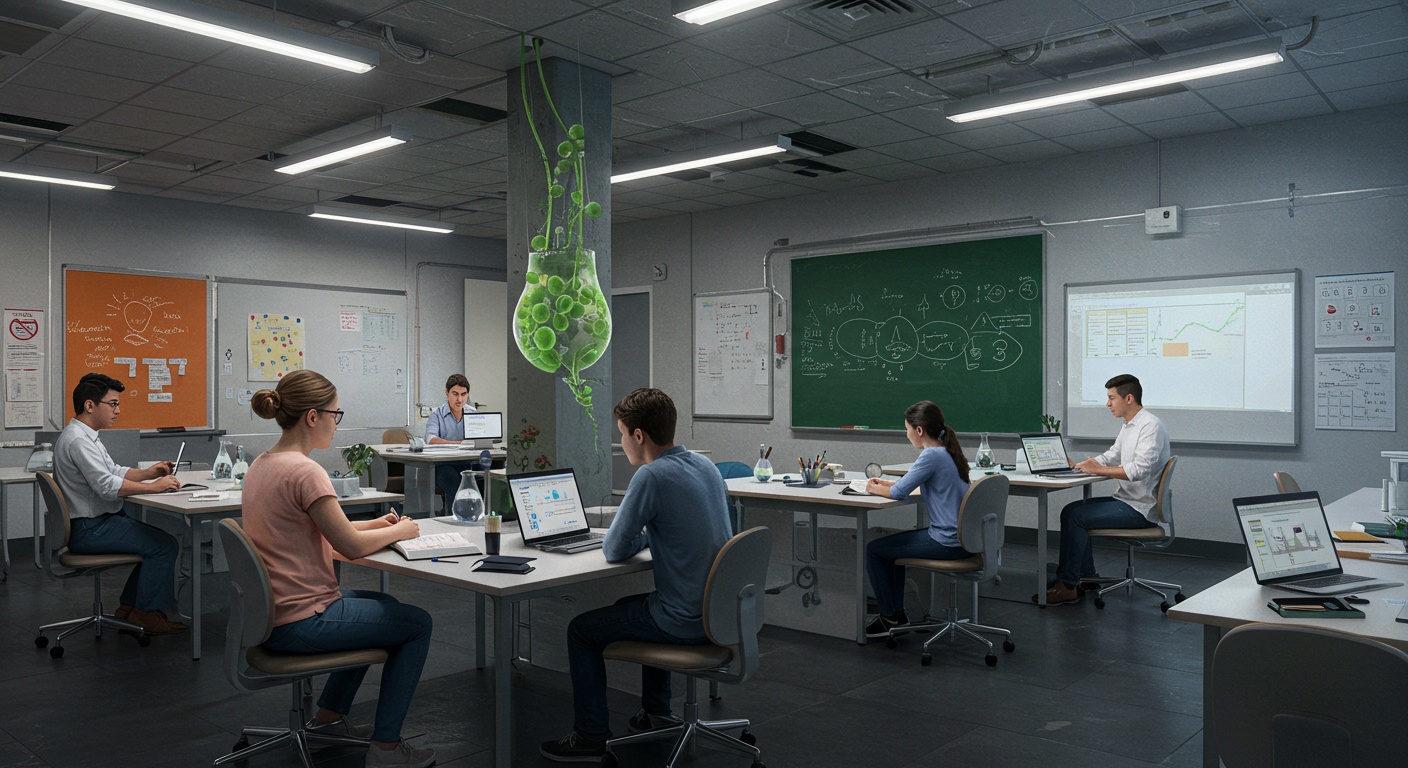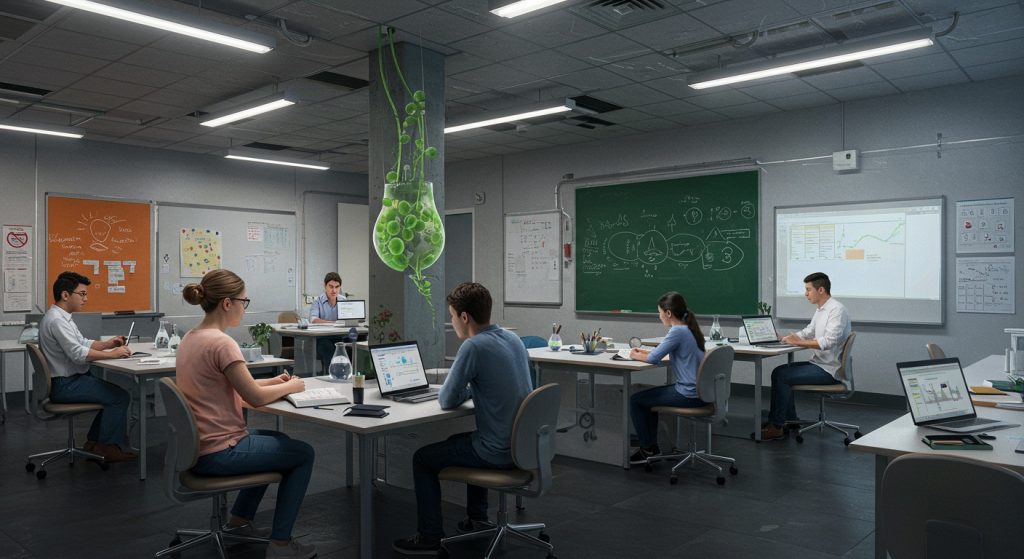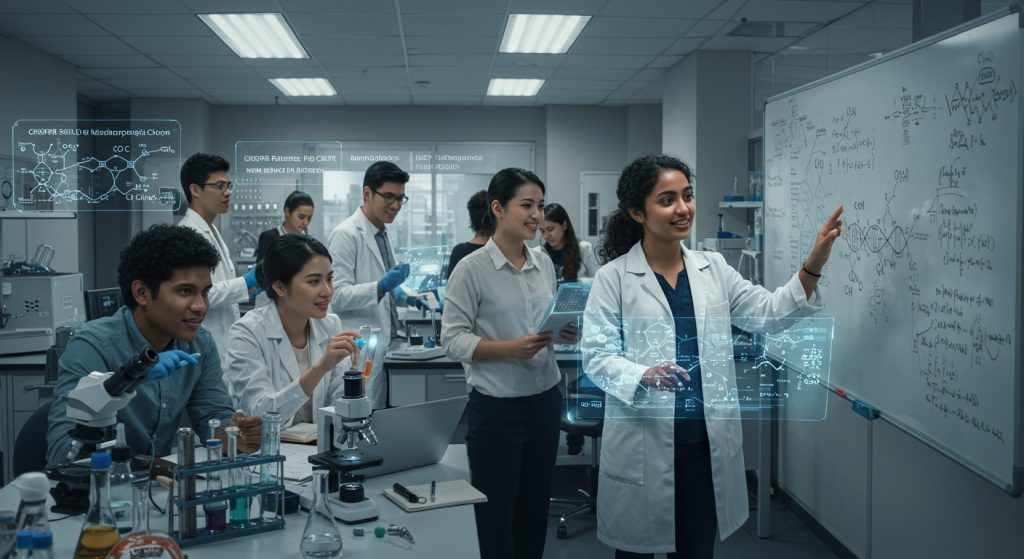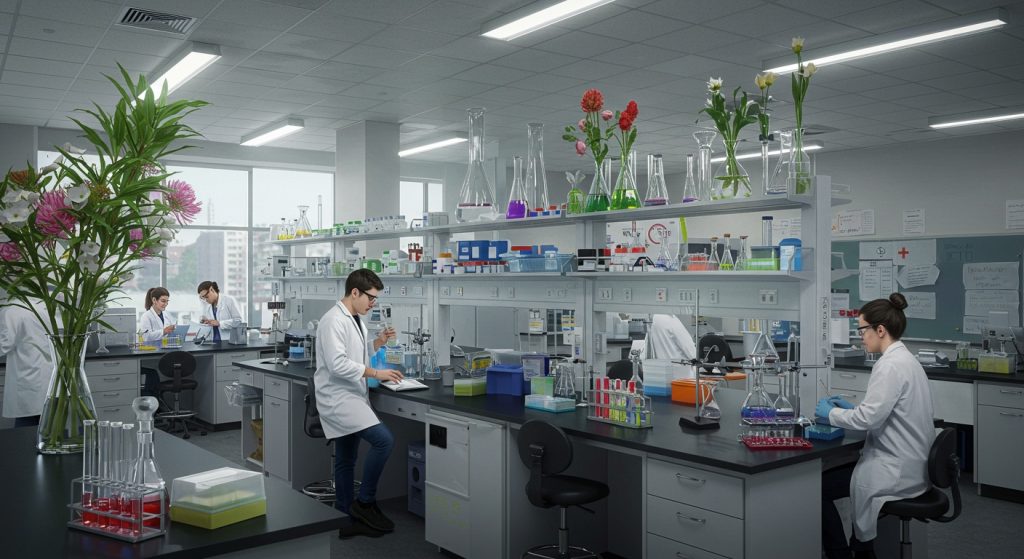Biotechnology fundamentally harnesses living systems and biological processes to develop transformative products and technologies that redefine our world. From the precision of CRISPR gene editing revolutionizing disease treatment and agriculture, to the rapid deployment of mRNA vaccines in global health crises, its applications are vast and rapidly expanding. This dynamic field, constantly integrating cutting-edge advancements like AI-driven drug discovery and sustainable biomanufacturing, offers unprecedented solutions across medicine, environmental protection. Food security. Understanding this powerful convergence of biology and engineering is crucial, as it actively shapes the future of human health, planetary sustainability. Beyond.

What Exactly is Biotechnology? Defining the Field
Imagine a world where diseases are cured with a simple genetic tweak, where sustainable energy powers our homes. Where food is produced with minimal environmental impact. This isn’t science fiction; it’s the promise of biotechnology. But what is biotechnology definition, truly? At its core, biotechnology is the use of living systems, organisms, or parts of organisms to develop or make products, or “any technological application that uses biological systems, living organisms, or derivatives thereof, to make or modify products or processes for specific use.” It’s a vast, interdisciplinary field that merges biology with technology, engineering. Various other sciences.
Think of it as humanity’s continuous effort to grasp and harness the incredible power of life itself. From the ancient Egyptians using yeast to bake bread and brew beer (a rudimentary form of biotechnology!) , to modern scientists editing genes with pinpoint precision, the underlying principle remains the same: leveraging biological processes to solve real-world problems and improve our lives. It’s about working with nature’s building blocks – DNA, proteins, cells – to create innovative solutions across countless sectors.
The Core Pillars of Biotechnology: Key Disciplines and Technologies
Biotechnology isn’t a single discipline but a vibrant tapestry woven from several specialized fields. Understanding these pillars helps grasp the breadth of its potential:
- Genetic Engineering
- Bioprocessing and Fermentation
- Bioinformatics
- Cell Culture and Tissue Engineering
- Bioremediation
This is perhaps the most well-known aspect. It involves directly manipulating an organism’s genes using techniques like recombinant DNA technology or the revolutionary CRISPR-Cas9 system. With CRISPR, scientists can “cut and paste” specific DNA sequences, correcting genetic defects, inserting new traits, or turning genes on and off with unprecedented accuracy.
This pillar focuses on using microorganisms (like bacteria or yeast) or their components to produce desired substances on a large scale. Think of how insulin for diabetes patients is produced in giant fermentation tanks using genetically modified bacteria, or how enzymes for detergents are manufactured.
As biological data (like DNA sequences) explodes, bioinformatics provides the computational tools and algorithms to store, assess. Interpret it. It’s crucial for drug discovery, understanding disease mechanisms. Personalized medicine.
This involves growing cells or tissues outside their natural environment, often in a lab. It’s vital for vaccine production, drug testing. Even growing organs for transplantation in the future.
This environmental application uses living organisms, usually microorganisms, to remove pollutants from contaminated sites. For example, specific bacteria can break down oil spills or toxic waste.
How Biotechnology is Revolutionizing Healthcare
The impact of biotechnology on healthcare is nothing short of transformative, offering hope for previously untreatable conditions and redefining how we approach medicine. My own experience, like many others, has seen the direct benefits of biotech innovations, from more effective flu vaccines to advanced diagnostics.
- Personalized Medicine
- Gene and Cell Therapy
- Advanced Diagnostics
- Drug Discovery and Biologics
- Vaccine Development
Biotechnology is moving us beyond one-size-fits-all treatments. By analyzing an individual’s genetic makeup, doctors can predict their susceptibility to certain diseases, tailor drug dosages. Select therapies most likely to be effective. This field, often called pharmacogenomics, is a cornerstone of future healthcare.
For conditions rooted in genetic defects, gene therapy offers the potential to correct the faulty genes themselves. Diseases like sickle cell anemia, cystic fibrosis. Certain forms of blindness are now targets for gene editing, offering curative rather than just symptomatic treatments. Early successes, such as the FDA approval of treatments for a rare form of inherited blindness, showcase this monumental leap.
From rapid COVID-19 tests to sophisticated cancer screenings, biotech-driven diagnostics allow for earlier, more accurate detection of diseases. Techniques like PCR (Polymerase Chain Reaction) and next-generation sequencing can identify pathogens, genetic markers. Even circulating tumor DNA with incredible sensitivity.
Many of today’s most effective drugs aren’t traditional chemicals but “biologics” – medicines derived from living organisms, like antibodies, hormones, or enzymes. Monoclonal antibodies, for instance, are designed to target specific cells (like cancer cells or immune cells involved in autoimmune diseases), leading to highly effective and targeted therapies with fewer side effects. The development of synthetic insulin for diabetes is a classic example of how biotechnology revolutionized patient care, moving from animal-derived sources to safer, mass-produced human insulin.
The speed at which mRNA vaccines were developed for COVID-19 highlights biotechnology’s power. By using genetic material (mRNA) to instruct our cells to produce a viral protein, these vaccines stimulate an immune response without exposing us to the actual virus, setting a new paradigm for rapid vaccine development.
Biotechnology’s Impact on Agriculture and Food Security
Beyond human health, biotechnology plays a critical role in addressing global food security and promoting sustainable agricultural practices. It’s a field rife with innovation, though often debated.
- Genetically Modified Organisms (GMOs)
- Disease and Stress Resistance
- Enhanced Nutrition and Shelf Life
- Sustainable Farming Tools
- Biofertilizers
- Biopesticides
- Alternative Proteins and Cellular Agriculture
This is a primary application in agriculture. Crops are modified to resist pests (reducing pesticide use), tolerate herbicides (simplifying weed control), or enhance nutritional value (e. G. , Golden Rice, engineered to produce beta-carotene, a precursor to Vitamin A, to combat deficiency). While concerns exist regarding ecological impact and corporate control, organizations like the National Academies of Sciences, Engineering. Medicine have repeatedly found that “currently available genetically engineered crops are safe to eat.”
Biotech methods help develop crops that can withstand devastating plant diseases (like blight) or environmental stresses such as drought, salinity. Extreme temperatures. This is increasingly crucial as climate change impacts traditional farming regions.
Beyond basic sustenance, biotechnology can improve the nutritional profile of staple crops, addressing hidden hunger. It can also extend the shelf life of produce, reducing food waste and improving distribution.
Microorganisms that enhance nutrient availability for plants, reducing reliance on synthetic chemical fertilizers.
Natural pest control agents derived from bacteria, fungi, or plants, offering a safer alternative to chemical pesticides.
The development of lab-grown meat (cultivated meat) and plant-based alternatives is a burgeoning area. Cellular agriculture aims to produce animal products like meat, milk, or eggs directly from cell cultures, promising a more sustainable and ethical way to meet future protein demands with a significantly smaller environmental footprint compared to traditional livestock farming.
Biotechnology Beyond Health and Food: Industry and Environment
The reach of biotechnology extends far beyond healthcare and agriculture, touching various industries and offering innovative solutions for environmental challenges. It’s about harnessing biology for industrial efficiency and ecological preservation.
- Biofuels and Bioenergy
- Bioplastics and Sustainable Materials
- Industrial Enzymes
- Detergents
- Textiles
- Paper and Pulp
- Food Processing
- Bioremediation and Waste Treatment
- Mining and Resource Recovery (Bioleaching)
Biotechnology is key to developing sustainable energy sources. Microorganisms can convert biomass (plant material, agricultural waste) into biofuels like bioethanol and biodiesel, reducing our reliance on fossil fuels. Algae, for example, are being engineered to produce lipids that can be refined into fuel, offering a high-yield, renewable option.
Imagine plastics that decompose naturally, or fabrics grown without intensive resource use. Biotechnology is enabling the creation of bioplastics from renewable biomass sources that are biodegradable, addressing the global plastic waste crisis. It’s also exploring ways to produce advanced materials with superior properties using biological processes, such as spider silk proteins for strong, lightweight materials.
Enzymes are biological catalysts that speed up chemical reactions. Biotechnology produces vast quantities of specific enzymes used in various industries:
Enzymes break down stains like fats and proteins.
Enzymes are used for fabric finishing, denim washing. De-sizing.
Enzymes help in bleaching and improving paper quality.
Enzymes are used in cheese making, brewing. Baking.
These bio-based processes are often more efficient, require less energy. Produce fewer harmful byproducts than traditional chemical methods.
As noted before, bioremediation is a powerful tool for environmental cleanup. Beyond oil spills, microbes are being used to break down heavy metals, pesticides. Other industrial pollutants in soil and water. Biotechnology also enhances wastewater treatment processes, making them more effective and environmentally friendly.
Biotechnology can even be applied to mineral extraction. Bioleaching uses microorganisms to extract metals like copper, gold. Uranium from low-grade ores. This method is often more environmentally sound than traditional smelting processes, which can be energy-intensive and produce significant pollution.
The Ethical Landscape and Future of Biotechnology
With its immense power, biotechnology also raises profound ethical questions and societal considerations. As we delve deeper into manipulating life, it’s crucial to navigate these waters with careful thought and public discourse.
- Ethical Dilemmas
- “Designer Babies” and Germline Editing
- Privacy and Genetic Discrimination
- Equitable Access
- Environmental Release of GMOs
- Regulatory Challenges
- The Promise of the Future
- Synthetic Biology
- AI and Machine Learning Integration
- Advanced Gene Therapies
- Regenerative Medicine
The ability to edit genes in human embryos or reproductive cells raises concerns about unintended consequences, creating a genetic “elite,” or diminishing human diversity. While therapeutic uses to prevent severe diseases are widely considered, non-medical enhancements are highly controversial.
As genetic sequencing becomes more common, questions arise about who has access to our genetic insights and how it might be used by employers, insurers, or governments.
Will the benefits of advanced biotech treatments be available to everyone, or only those who can afford them, exacerbating health disparities?
Concerns persist about the potential for genetically modified organisms to cross-pollinate with wild relatives or impact biodiversity, requiring careful regulation and monitoring.
Governments worldwide grapple with establishing robust regulatory frameworks that can keep pace with rapidly evolving biotech innovations. Striking a balance between fostering innovation and ensuring safety and ethical conduct is a constant challenge. Organizations like the FDA in the U. S. And the European Medicines Agency (EMA) are continuously evaluating new biotech products for safety and efficacy.
Despite the challenges, the future of biotechnology is incredibly promising. We’re on the cusp of breakthroughs in:
Designing and constructing new biological parts, devices. Systems, or redesigning existing natural biological systems for useful purposes. This could lead to custom-designed microbes for manufacturing chemicals, producing novel drugs, or even creating biological computers.
Artificial intelligence is accelerating biotech research by analyzing massive datasets, predicting protein structures, designing new molecules. Optimizing experimental procedures, dramatically speeding up discovery and development.
Expanding gene therapy to more common diseases, potentially offering cures for conditions like Alzheimer’s or Parkinson’s.
Growing complex tissues and organs in the lab for transplantation, eliminating the need for organ donors and reducing rejection risks.
The journey of biotechnology is a testament to human ingenuity and our quest to grasp and leverage the living world. It’s a field that demands not just scientific rigor but also thoughtful societal engagement, ensuring that its incredible power is wielded responsibly for the betterment of all.
Conclusion
Our journey through biotechnology reveals a field not confined to labs. Deeply interwoven with our daily lives, from the mRNA vaccines that reshaped global health to the promise of CRISPR gene editing revolutionizing disease treatment. This guide has aimed to demystify how these innovations work, moving beyond complex jargon to illustrate their profound impact. As a personal tip, I encourage you to stay curious; follow reputable science news, perhaps from sources like Nature or Science, to witness breakthroughs like cultivated meat or personalized medicine unfold in real-time. Understanding these developments empowers you to engage in informed discussions and recognize how biotechnology shapes your future, offering solutions to global challenges like food security and climate change. Embrace this era of biological innovation; your awareness is the first step towards navigating. Even contributing to, this transformative scientific landscape.
More Articles
Transforming Weaknesses into Strengths: Improving Low-Scoring Areas for GATE Success
Last-Minute GATE Exam Success: Proven Revision Strategies and Smart Tips
Cracking GATE While Working: Effective Preparation Strategies for Busy Professionals
Website Overhaul: Effective Content Strategies for Managing Uncategorized Pages
Digital Declutter: Smart Strategies to Categorize Your Large Volumes of Files
FAQs
So, what exactly is biotechnology?
Simply put, biotechnology uses living organisms or parts of them to create or modify products, improve plants or animals, or develop microorganisms for specific uses. Think of it as using nature’s own tools to solve problems and create new things for human benefit.
How does biotech actually affect my everyday life?
You might not even realize it! Biotech is in your daily life through things like the medicines you take (insulin, vaccines), the food you eat (drought-resistant crops, fermentation in bread or cheese). Even the detergents that clean your clothes (enzymes). It’s quietly making many modern conveniences possible.
Is biotechnology just about making new medicines?
While medicine is a huge and impactful part of it, biotech goes way beyond that. It’s used in agriculture to create hardier and more nutritious crops, in industry for biofuels and sustainable manufacturing processes, in environmental clean-up to break down pollutants. Even in forensics for DNA analysis. It’s a very broad field!
What are some exciting future applications of biotechnology?
Get ready for things like personalized medicine tailored to your unique genetic makeup, lab-grown meat that’s more sustainable, new ways to reverse environmental damage. Advanced gene therapies that could cure diseases previously thought incurable. The possibilities are truly mind-blowing and constantly evolving.
Are there any downsides or ethical things to worry about with biotechnology?
Absolutely, like any powerful technology, there are concerns. People often worry about things like genetic privacy, the potential for unintended environmental impacts from genetically modified organisms. Ethical questions surrounding gene editing in humans. It’s crucial to have open discussions and responsible regulations to guide its development.
How might biotechnology really change our world in the next decade or two?
Over the next 10-20 years, we could see major shifts in healthcare, making treatments more effective and preventive. Food production might become significantly more sustainable and efficient. We could develop new solutions for energy and waste management. Even create entirely new materials. It promises a future that is healthier, more resource-efficient. Potentially more resilient to global challenges.
Do I need a science degree to grasp this guide?
Not at all! This guide is specifically designed to make biotechnology understandable for everyone, regardless of their scientific background. It aims to simplify complex concepts so you can grasp the basics and appreciate how this fascinating field is shaping our future world.



